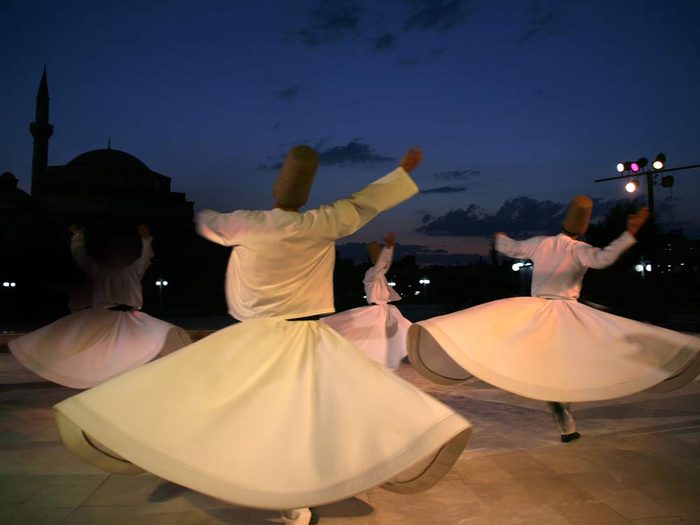
1. Whirling Dervishes – Istanbul, Turkey
Demonstrating their faith and devotion through a religious ceremony known as the Sema, dervishes-properly known as semazens-are members of the Mevlevi Order, a sect of the Sufi branch of Islam. The men who perform this swirling dance are outfitted in long flowing skirts and whirl counterclockwise by spinning on their right feet (following the orbit of the planets and stars) with one hand pointed up (to receive divine blessings) and one hand down (to pass them along to those on earth). It’s a dizzying experience to watch—but not so, somehow, for the dervishes themselves.
When to Go: A number of venues in Istanbul offer performances year round, including the Hodjapasha Cultural Center, which is within close walking distance of top attractions like the Blue Mosque and Topkapi Palace.
Try This at Home: Lessons for this very special dance are extremely hard to come by in Canada, but the Jerrahi Sufi Order of Canada, based in Toronto, occasionally hosts whirling dervish performances.
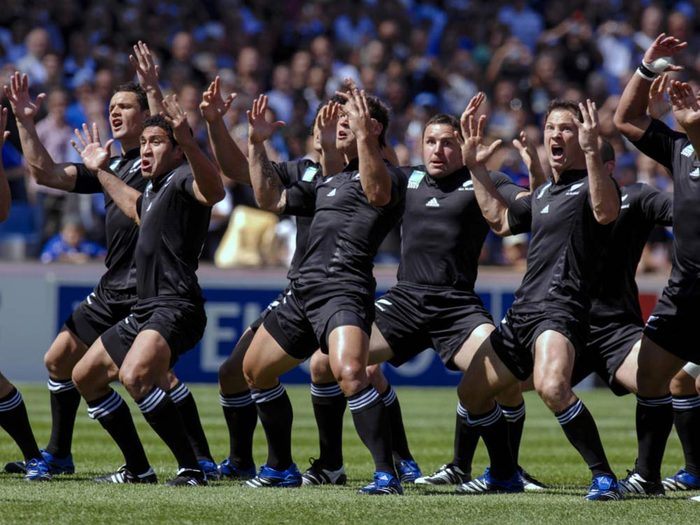
2. Haka – New Zealand
Haka, a traditional dance of New Zealand’s Maori, is a fearsome display. Historically performed by tattooed warriors before heading into battle, the dance involves forceful chants, stomping feet, body slaps and facial contortions. Other forms of the dance are performed to celebrate accomplishments or to welcome important guests. In modern times, the haka has been adopted by a different contingent of warriors—the All Blacks, New Zealand’s national rugby team, who perform the dance before heading into battle against their opponents out on the pitch.
When to Go: New Zealand is in the southern hemisphere, which means their seasons are opposite to those in North America-so November, December and January are some of the best months for travel.
Try This at Home: The Kauhane School of Polynesian Dance in Maple Ridge, B.C., offers lessons in traditional Maori and other Polynesian dances.
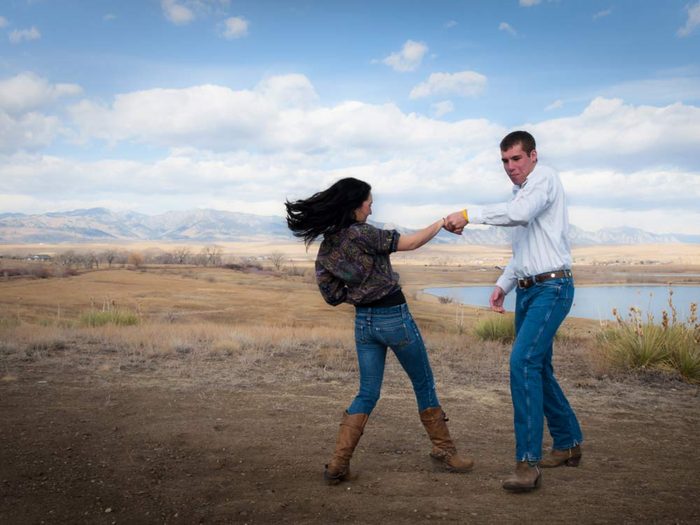
3. Two-Step – Texas
Best performed wearing Wranglers and a pair of slick cowboy boots, this dance is popular across the southern United States, but gains its greatest expression on the shining dance hall floors of Texas. Closely tied with country and Western music (originally known as “hillbilly music”), which was carried out of the Appalachian Mountains and across the Mississippi by migrants travelling westward, the two-step is usually performed in pairs moving counter-clockwise around the dance floor to the sounds of the fiddle, dulcimer and steel guitar.
When to Go: Summer is always a scorcher and winters can be rainy, so spring and fall make for the best times to visit the Lone Star State.
Try This at Home: Alberta has always been Canada’s home for the two-step, and Ranchman’s Cookhouse and Dancehall, a Calgary institution, has been offering lessons for decades.
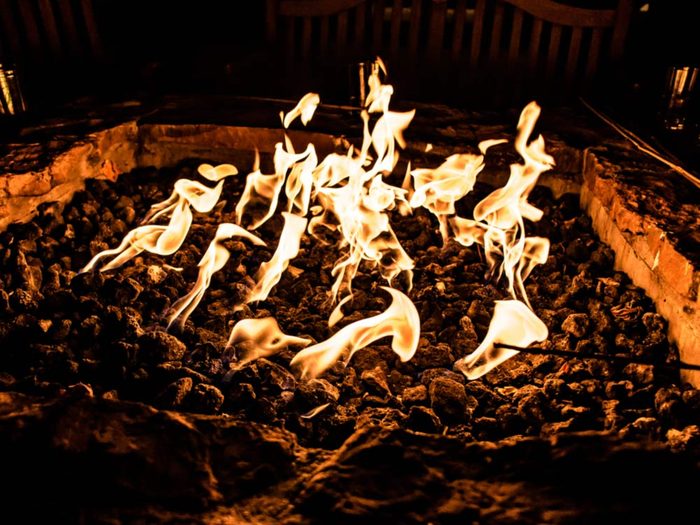
4. Fire Dancing – Bikaner, India
In the far reaches of the Thar Desert in western Rajasthan—a place where camels still play a key role in day-to-day life, and family and religious connections run deep—the Guru Jasnath Ji Maharj Jagran fire dancers express their worship on hot coals. This orange turbaned Hindu sect believes they received a special blessing from the gods to perform this dance unharmed more than five centuries ago. With tantalizing music (which includes ringing bells and rhythmic chanting) as their soundtrack, they perform spellbinding steps in between brief breaks when they take the flaming coals and pop them into their mouths.
When to Go: During the Bikaner Camel Festival, which takes place each January.
Try This at Home: Do not try this at home.
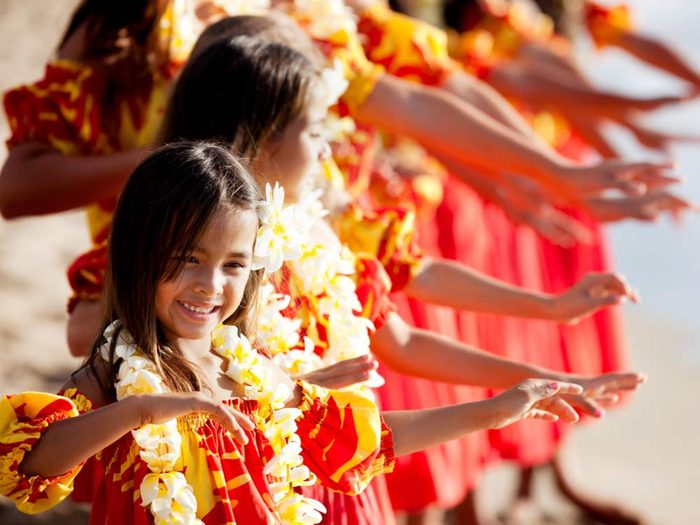
5. Hula – Hawaii
Although the word “hula” usually evokes images of palm trees and sugary white beaches (set to the soothing sound of a softly strummed ukulele), this dance actually has serious roots and a history fraught with exclusion and marginalization. Created centuries ago by native Hawaiians, many hula dances tell the legendary stories about the formation of the Hawaiian Islands and other traditional tales. Seen as a threat by white settlers, the hula was outlawed for much of the 19th century. But times have definitely changed—now tourists pay steep sums to see excellent performances of this beautiful dance.
When to Go: There’s really no bad time to visit Hawaii and luaus demonstrate the dance all year round!
Try This at Home: Siony’s Dance Company in Toronto has been offering lessons in the hula since 1978.
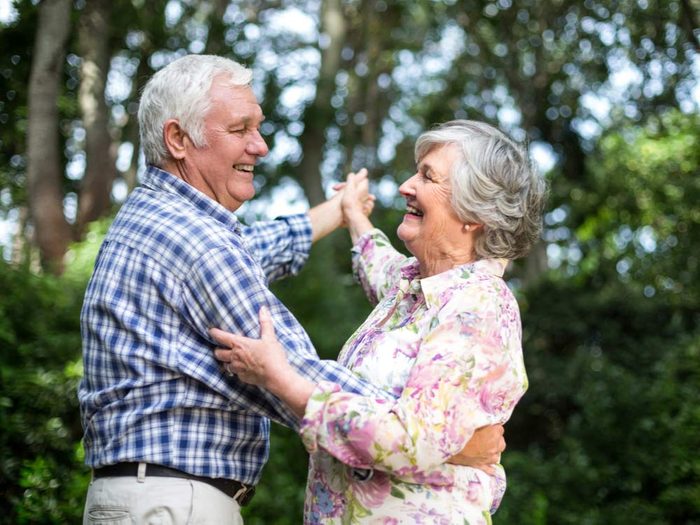
6. Step Dancing – Newfoundland
Derived from the island’s Irish roots, these steps have been passed down through families, in the home, for generations. Now celebrated at festivals, weddings and other occasions when the community gathers, Newfoundland step dance, with is usually set to the sound of a fiddle, takes on various forms. Dancing solo is still the most common—individual dancers stand upright with little movement of the arms and torso and move their feet lightly and rhythmically in dances that are often improvised—but various group dances, including reels, cotillions, longways and square dances are also performed.
When to Go: During the annual Newfoundland and Labrador Folk Festival, which hosts various forms of traditional step dance on its main stage—the event is held every year in early August.
Try This at Home: The Mount Pearl School of Dance near St. John’s offers lessons in traditional step dance.
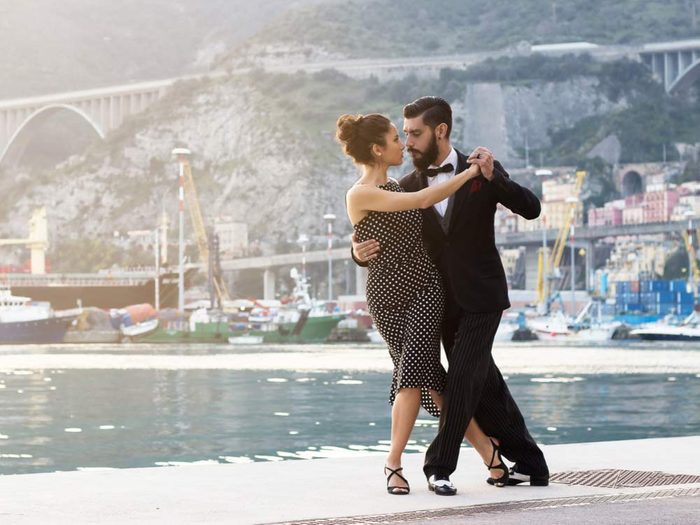
7. Tango – Argentina
Coming up from the brothels and streets of lower-class Buenos Aires and Montevideo (Uruguay), this sexy, sensual dance swept the western world in the first two decades of the twentieth century, and is currently undergoing a revival in the country of its birth. Various styles emerged from different parts of Argentina, and a number of variations persist today, including Argentine tango (characterized by a chest-to-chest embrace) and international tango (where dancers are typically connected at the hip).
When to Go: Visit Buenos Aires in August when the World Tango Festival takes place.
Try This at Home: Studio Tango in Montreal’s Vieux Port offers authentic Argentine Tango.